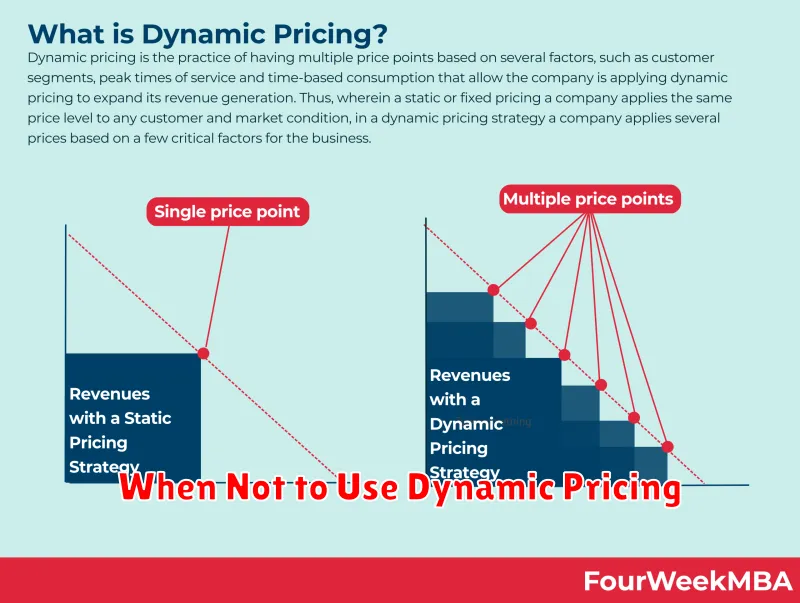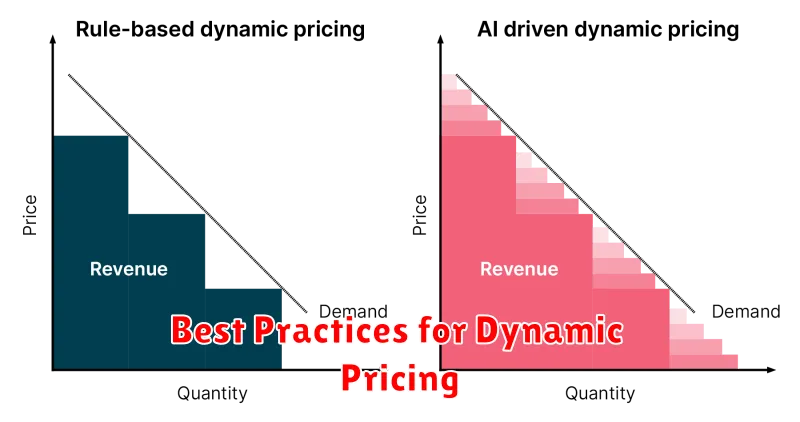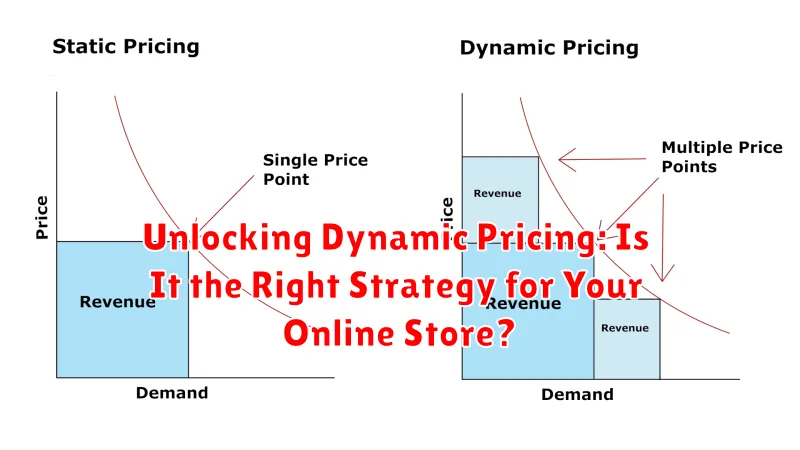In today’s ever-evolving e-commerce landscape, businesses constantly seek innovative strategies to optimize revenue and maintain a competitive edge. Dynamic pricing has emerged as a powerful tool, allowing online retailers to adjust prices in real-time based on various market factors. This approach offers the potential to maximize profits, increase conversion rates, and effectively respond to changing demand. However, implementing dynamic pricing requires careful consideration and a thorough understanding of its complexities. Is it the right strategy for your online store? This article will delve into the intricacies of dynamic pricing, examining its benefits, challenges, and crucial factors to consider before implementation.
Unlocking the full potential of dynamic pricing requires a strategic approach. From understanding the algorithms involved to analyzing market trends and competitor behavior, numerous elements contribute to a successful dynamic pricing strategy. This article will explore the key considerations for businesses contemplating dynamic pricing, including pricing strategies, competitor analysis, demand forecasting, and the ethical implications of fluctuating prices. By exploring these crucial aspects, you can determine if dynamic pricing aligns with your business objectives and customer expectations. Ultimately, this knowledge will empower you to make informed decisions and unlock the potential for increased profitability and a stronger market position within your online store.
What is Dynamic Pricing?
Dynamic pricing, also known as surge pricing, time-based pricing, or demand pricing, is a pricing strategy where businesses set variable prices for products or services based on market demands and other factors.
Instead of having a fixed price, dynamic pricing allows businesses to adjust prices in real-time. This flexibility enables them to capitalize on fluctuating market conditions, maximize revenue, and remain competitive.
Several factors influence dynamic pricing algorithms. These include competitor pricing, levels of supply and demand, and even time of day or season.
This approach is commonly used in industries like travel, hospitality, and e-commerce where demand can change rapidly. It differs significantly from fixed pricing strategies where prices remain consistent regardless of market fluctuations.
How Dynamic Pricing Works
Dynamic pricing operates on the principle of adjusting prices in real-time based on a variety of factors. Sophisticated algorithms analyze market data, competitor pricing, demand fluctuations, and even external elements like seasonality and weather patterns.
These algorithms are often integrated directly with an online store’s inventory management system. As these factors shift, the algorithm automatically recalculates and adjusts prices accordingly. This can happen multiple times a day, or even within the hour, ensuring that prices remain optimized for current market conditions.
Data feeds play a crucial role, supplying the algorithm with up-to-the-minute information. This data is processed to identify trends and predict future demand, enabling proactive price adjustments. Rules and constraints are also implemented to prevent extreme price fluctuations and maintain price consistency within acceptable boundaries.
Benefits of Using Dynamic Pricing
Dynamic pricing, when implemented effectively, offers several key advantages for online businesses. One of the most significant is increased revenue and profitability. By adjusting prices in real-time to reflect demand and market conditions, businesses can optimize their pricing strategies to capture the maximum possible revenue for each product.
Dynamic pricing allows for improved competitiveness. Staying agile with pricing enables businesses to quickly respond to competitor price changes and maintain a competitive edge in a fast-paced market.
Better inventory management is another notable benefit. By raising prices on items with low stock, dynamic pricing can help control demand and prevent stockouts. Conversely, lowering prices on overstocked items can encourage sales and free up valuable warehouse space.
Finally, dynamic pricing allows for enhanced customer segmentation and targeting. By analyzing customer behavior and preferences, businesses can tailor pricing strategies to specific customer segments, offering personalized pricing and promotions to maximize conversions.
Drawbacks and Risks of Dynamic Pricing
While dynamic pricing offers potential benefits, it also carries inherent risks. Customer alienation is a major concern. Fluctuating prices can erode customer trust and loyalty, especially if perceived as unfair or manipulative. Price volatility may lead to a negative brand image, with customers viewing the business as opportunistic.
Price wars are another potential drawback. In highly competitive markets, dynamic pricing can trigger retaliatory price cuts from competitors, leading to a race to the bottom and reduced profit margins for all involved. Careful consideration of the competitive landscape is essential.
The complexity of implementing and managing dynamic pricing systems can also pose a challenge. Businesses need access to robust data analytics and sophisticated software to effectively monitor and adjust pricing in real-time. This often requires specialized expertise and ongoing investment.
Finally, legal and ethical considerations must be addressed. Dynamic pricing practices should comply with relevant regulations and avoid discriminatory pricing based on factors such as demographics or location. Transparency in pricing strategies can help mitigate these risks.
When to Use Dynamic Pricing
Implementing dynamic pricing isn’t always the best approach. Consider using dynamic pricing in the following scenarios:
High Demand and Limited Supply
When dealing with products or services experiencing high demand and limited supply, dynamic pricing can help maximize revenue and manage inventory effectively. Think concert tickets or limited-edition items.
Highly Competitive Markets
In markets with intense competition, dynamic pricing allows you to react quickly to competitor price changes and maintain a competitive edge, especially for commodities or price-sensitive goods.
Seasonal Products or Services
For products or services with fluctuating demand based on seasonality, dynamic pricing can optimize pricing throughout the year. This is applicable to travel, fashion, or holiday-related items.
Perishable Goods
When selling perishable goods, dynamic pricing can help reduce waste and maximize profit by lowering prices as the expiration date approaches.
Large Product Catalogs
Managing prices for a large inventory can be challenging. Dynamic pricing software automates this process and allows for efficient price adjustments across a wide range of products.
When Not to Use Dynamic Pricing

While dynamic pricing offers numerous advantages, it’s not a universal solution. Several scenarios exist where implementing dynamic pricing may be detrimental to your business.
Brand Image Concerns: If your brand identity is built on consistent value and transparent pricing, fluctuating prices can erode customer trust and create perceptions of unfairness. This is especially true for businesses selling everyday essential items.
Limited Competition: In markets with minimal competition, dynamic pricing may not be necessary. If you already hold significant market share, adjusting prices dynamically might not yield substantial benefits and could even alienate loyal customers.
Highly Regulated Industries: Certain industries face strict regulations regarding pricing practices. Before implementing dynamic pricing, ensure it complies with all applicable regulations to avoid legal issues.
Small Product Catalog: For businesses with a limited product catalog, the complexity of managing dynamic pricing may outweigh the potential benefits. The administrative overhead may not be justified by the return.
Lack of Technical Capabilities: Dynamic pricing requires sophisticated software and analytical tools. If your business lacks the technical expertise or resources to implement and manage these systems, it’s likely not the right time to adopt this strategy.
Implementing Dynamic Pricing in Your Store
Implementing dynamic pricing requires a systematic approach. Start by selecting a robust pricing software that integrates with your existing e-commerce platform. These tools offer various pricing rules and automation capabilities.
Next, define your pricing rules based on your chosen strategy. Will you adjust prices based on competitor pricing, demand fluctuations, or time-based factors? Clearly establishing these rules is crucial for consistent pricing.
Integrate your chosen software with your inventory management system and other relevant data sources. This ensures accurate data feeds for real-time price adjustments. Thoroughly test the integration before fully deploying dynamic pricing.
Finally, train your team on the new system and processes. Ensure they understand how the dynamic pricing system works and how to address any potential customer inquiries regarding price changes.
Best Practices for Dynamic Pricing

Transparency is paramount. While you don’t need to disclose your exact pricing algorithm, be upfront about using dynamic pricing. Consider explaining that prices may fluctuate based on demand and other market factors. This builds trust and avoids alienating customers.
Establish clear pricing floors and ceilings. This prevents prices from dropping too low and eroding profit margins, or rising too high and deterring purchases. These boundaries maintain a sense of reasonable pricing within a competitive landscape.
Segment your audience effectively. Different customer segments may have varying price sensitivities. Tailor your dynamic pricing strategy accordingly to maximize revenue and cater to diverse buying behaviors.
Regularly analyze your data. Monitor price fluctuations, sales volume, and competitor pricing. This allows you to identify what works best and refine your strategy over time for optimal performance.
Monitoring and Adjusting Your Dynamic Pricing Strategy
Continuous monitoring is crucial for a successful dynamic pricing strategy. Track key performance indicators (KPIs) like sales volume, conversion rates, and profit margins. Analyze how price changes influence these metrics.
Regularly review your pricing rules and algorithms. Market conditions change, and your strategy should adapt accordingly. Are your rules still relevant? Are they achieving the desired outcomes? Refine them based on collected data and market analysis.
A/B testing can provide valuable insights. Experiment with different pricing strategies for similar products or customer segments. Compare the results to determine which approach yields the best performance. This iterative process helps optimize your dynamic pricing approach over time.
Don’t forget about competitor monitoring. Stay informed about their pricing strategies to ensure your prices remain competitive while maintaining profitability. Be aware of market trends and how they might influence customer behavior and pricing decisions.

